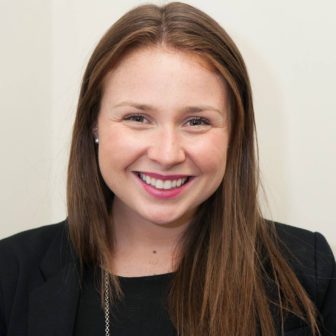NEW YORK — The first time I went to jail, my professor sent me there. Before I could think too much about what I had agreed to do, I piled into a beat-up 12-passenger van with 11 others. I was unsure if my nerves were from my concern that the van wasn’t going to make it the 15 miles across the city or my fear of what awaited me on the other side of the bridge at Rikers Island, New York’s main jail complex. If I’m being honest, it was a bit of both.
I peered out the window and watched as my city surroundings were replaced with high fences, barbed wire and brick buildings. I took comfort in the fact that I only needed to be here for a few hours.
Inside the jail, I walked through a metal detector, and tried not to let the slamming of metal doors in the distance completely unnerve me as I was patted down by an officer. Once we were declared contraband-free and cleared to move forward through the facility, a corrections officer escorted our group down a long hallway leading to a bleak-looking staircase.
Unsure of where we were heading, I clenched my composition notebook and single pen, all we were allowed to bring into the jail with us, and followed his lead. We descended the stairs to a basement-level classroom filled with art projects, papers, educational tools and, most importantly, our new classmates. The 10 male inmates stared back at us, mirroring our nerves and excitement.
My mind flashed to a few months back when I went to my academic office, signed some paperwork and was officially enrolled in this new criminal justice ethics course. Aside from a day spent getting fingerprinted and an official Department of Corrections ID card, enrolling in this class was very simple for me.
It was much more complicated for my Rikers classmates. They wrote essays making the case for why they should be able to take this college-level course instead of other applicants. In addition to their personal statements, acceptance was based on the length of their sentence and the details of their crimes.
[Related: Families of Rikers Island Inmates: A Photographer’s Focus]
Ever since the government cut back on educational programs in jails in the 1990s, opportunities to participate in college-level courses were rare and many inmates jumped at this chance. Since it was a pilot class with finite resources, space was limited and the process was rigorous and selective.

Kathleen White
In the classroom, we were told to rearrange the desks in a circle. Every Manhattan College student faced a Rikers student for a round of icebreakers to get to know each other better. Before getting to the island, we were given strict instructions not to share too much information or ask personal questions about our Rikers classmates. Fearing I would cross a line, I nearly forgot how to speak. I fumbled while answering simple questions about my favorite movie. My Rikers classmate began to laugh at my ridiculousness and I joined him, both of us recognizing our nerves.
In that moment, the first of many barriers broke, and an inmate at Rikers Island handed a piece of my humanity back to me.
For the next five months, we would gather in this classroom every Tuesday to discuss the ethics behind prison reform, sentencing policies and the intricate facets of the criminal justice system. We functioned as much as possible like a regular college class, although we had some setbacks.
Class schedules were often altered by jail lockdowns. Our Rikers classmates faced challenges, such as violence, lack of resources and the looming threat of further punishment, both from guards and other inmates that I simply could not imagine.
While I had originally thought the most difficult thing I would do that semester was step foot on Rikers Island, I later realized it would be doing a group project with someone who left our classroom to return to solitary confinement. Aside from the obvious logistical challenges, I struggled to support my classmate emotionally as he returned to a nightmare and I rode a bus back to the safety of my college campus. I began to question the systems in place that led to the faults in American jails.
We grew as a group; not just as classmates, but also as friends. In the final weeks of the course, we often sat in that same circle, where we once awkwardly fumbled over icebreaker questions, and we unpacked heavy topics from personal biases to fears we had about the future.
One day, a classmate with a trembling voice shared with a mix of anger and sadness that he was afraid of what was going to happen when he was released from Rikers Island and returned home. He detailed how the very home he was expected to return to was filled with the violence and instability that led to his incarceration.
When the class culminated in a graduation ceremony, our Rikers classmates received acceptance letters and full-ride scholarships to Manhattan College, a small, four-year, liberal arts institution in the Bronx. As we said goodbye, we made plans to reunite on campus upon their release the following semesters.
However, reality proved different than our plans. Upon return to my campus routine, I soon learned that few of my Rikers classmates could commit to being college students while battling the competing demands of reentering society with a criminal background. The story of my classmate who feared returning to a violent home stayed with me as I wrapped my head around the absence of my classmates and tried to understand the complexities of reentry.
Kathleen White is a former Jesuit Volunteer with a B.A. in history and peace studies and an advocate for human rights, juvenile justice and prison reform. In March, she will begin instructing ESOL conversation classes for inmates on Rikers Island before graduate school at the University College Cork in Ireland as a George J. Mitchell Scholar. At UCC, she will study sociology while researching Ireland's juvenile justice system.
More related articles:
How Going to Jail Changed My Life Path, Part 2
How Going to Jail Changed My Life Path, Part 3
Ex-inmates at Rikers Tell Their Own Stories in New Documentary
